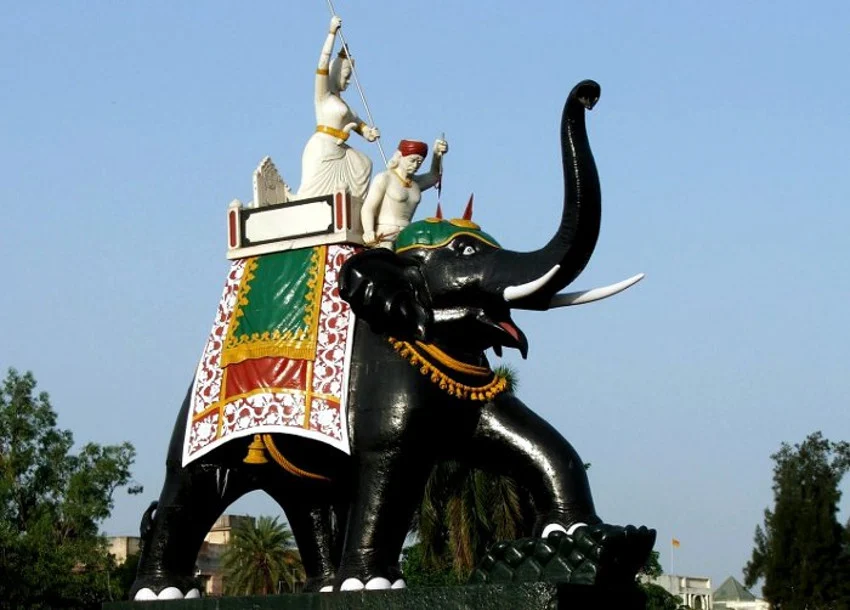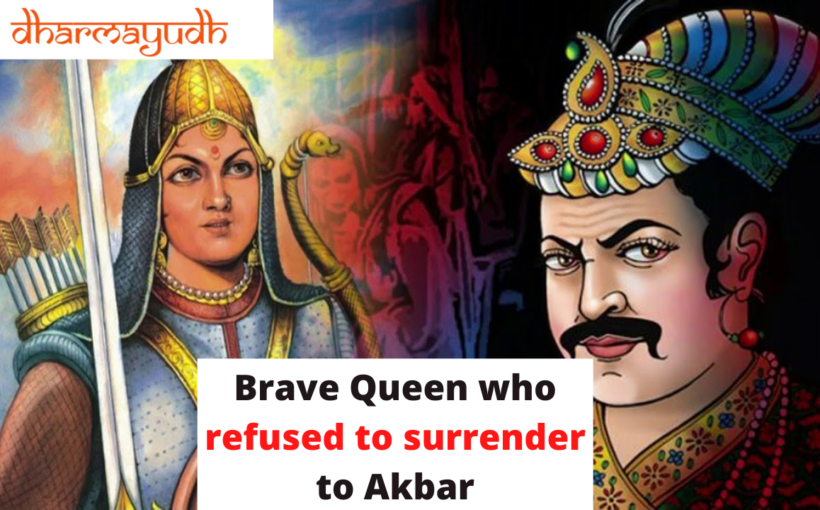Content
Background
While the name of the Great Rajput King Maharana Pratap and his incessant struggle against the Mughals is well known but prior to him, there was another Rajput Kshatrani who became a symbol of freedom, fighting for her kingdom against the big & mighty armies of Mughals. She was Rani Duragavati of the Gond Kingdom.
Whenever we talk about the role or simply the contribution of women in shaping the history of present India our mind spins around to only certain names. In Modern Indian history, we know that women at that time fearlessly and wholeheartedly participated in the freedom movement to liberate India from the clutches of the British Raj.
The stories of Rani Lakshmi Bai, Rani Gaidinliu , Begum Hazrat Mahal, and Rani Jindal are still alive in many folk songs. But the sagas of the great women of India don’t just end here. Just like in India’s modern history, there were several women in medieval India whose stories are yet to be told.
Women of medieval India ruled the vast kingdom and fought against the Turkish invaders like Moh Ghori, whose primary aim was to loot and plunder India’s vast wealth. The stories of the Women warriors like Naiki Devi who crushed the army of Moh Ghori in the year of 1178 CE or Rani Karnavati of Garhwal kingdom who defeated the army of Shah Jahan are some great examples of it(You can read about them by clicking their names above)
But the list didn’t end here. In this article, we will cover the story of another woman Rajput warrior who was the descendant of the great Chandela Rajput king Vidhyadhara. In her reign, this queen fought around 51 battles and crushed the Mughal emperor Akbar’s army.
The name of this Kshatrani is Rani Duragavati, the queen of Gonds (situated in the modern-day eastern Madhya Pradesh area).
She was born on 5 October 1524 CE at Kalinjar fort (in modern-day Uttar Pradesh). Her father’s name was Keerat Rai. Unfortunately, she lost her mother at a very young age. Later at the age of 18, she got married to Dalpat Shah of the Gond Dynasty (Garha-Mandla).
During this time the power of the Chadelas became critical and due to this the marriage between a Rajput lady and a Gond king is considered as a part of diplomacy to organize a united front against the invaders.

Rani Durgavati and the Defeat of Baz Bahadur
In the year 1545, Rani Durgavati gave birth to a son (Vir Narayan), who later became a fierce military leader. When Vir Naraya i.e. the son of Durgavati was only 5 years old his father (Dalpat Shah) died and the kingdom of Garha-Mandla was without a king and became vulnerable to attack.
At this time, Queen Durgavati, who had immense knowledge in the field of sword fighting , the art of war, cavalry, etc. ascended the Gond kingdom’s throne. For the strategic purpose, Rani Durgavati immediately shifted her kingdom’s capital from Singaurgarh fort to Chauragarh (situated at Satpura hills).
Baz Bahadur, the sultan of Malwa, attacked Rani Durgavati in the year 1556 when northern India had witnessed the Second battle of Panipat. But the ambitions of the Sultan were ruthlessly crushed by the brave queen. It is believed that the army of Rani Durgavati inflicted heavy casualties on the army of Baz Bahadur.
Note: It is believed that Rani Durgavati had a cavalry force of 20000 and about 100 war elephants.
Battle Against the Mughals
But as mentioned above after the second battle of Panipat Mughals were able to establish their rule over Delhi and north India. Soon after it, the Mughals under their king Akbar started conquering their neighboring kingdoms which was the result of their expansionist policies. Due to this, the Mughals were able to defeat Baz Bahadur in the year of 1562 CE and now the kingdom of Gond was their next target. In the year of 1564, Asaf Khan attacked the kingdom of Gond.

Rani Durgavati well aware of this rising threat and she immediately decided to move her army to Narai Nala (present-day Jabalpur district). This was a tactical move to let the enemy come in unfamiliar terrain. When the invaders entered the valley the army of Rani Durgavati inflicted mass assault on them. A fierce battle ensued in which the Chief (Faujdar) of the Gond army was killed. Due to this Rani, herself commanded the troops and chased the Mughals out of the region.
This was a major victory for the Gonds as at that time the Mughal power was at their peak.

The next day the Mughals returned with their reinforcement and artillery support. In this battle, Vir Narayan the son of Rani Durgavati also fought alongside her mother.
Durgavati fought the battle on the elephant whose name was Sarman. In the battle, her son was seriously injured and was forced to retreat to a safer place.
But courageous Rani Durgavati fought the battle against the mighty army of the Mughals. During the battle, she was shot by 2 arrows one at her ear and the other at her neck. Outnumbered against the Mughals and badly injured Rani Durgavati is said to have kill herself, rather than to be captured or be killed by enemies.
Many eminent historians believed that she plunged a knife into herself and attained martyrdom at the age of only 40 (24th June 1564 CE).

To remember the story of the ultimate sacrifice done by Rani Durgavati 24th of June is remembered as BALIDAN DIWAS (martyrdom day).
Soon the kingdom of Gond (Garha-Mandla) was subjugated by the Mughals.
It is difficult to believe that we have to continuously remind the names of these unsung warriors like Rani Duragavati and many more who laid down their lives for their Matrabhoomi. Perhaps if our biased historians would have done a better job instead of glorifying invaders like Mughals and others, more Indians would know of such heroic Hindu heroes who fought for centuries to save India and because of whom India & Hinduism still exist.
LIKE WHAT WE ARE DOING? DONATE TO DHARMAYUDH !
If you Support what we are doing and would like to contribute to help us grow and reach more Indians to teach them more about such forgotten historic Indian Heroes and stories, please consider donating any amount. It will help us grow.

